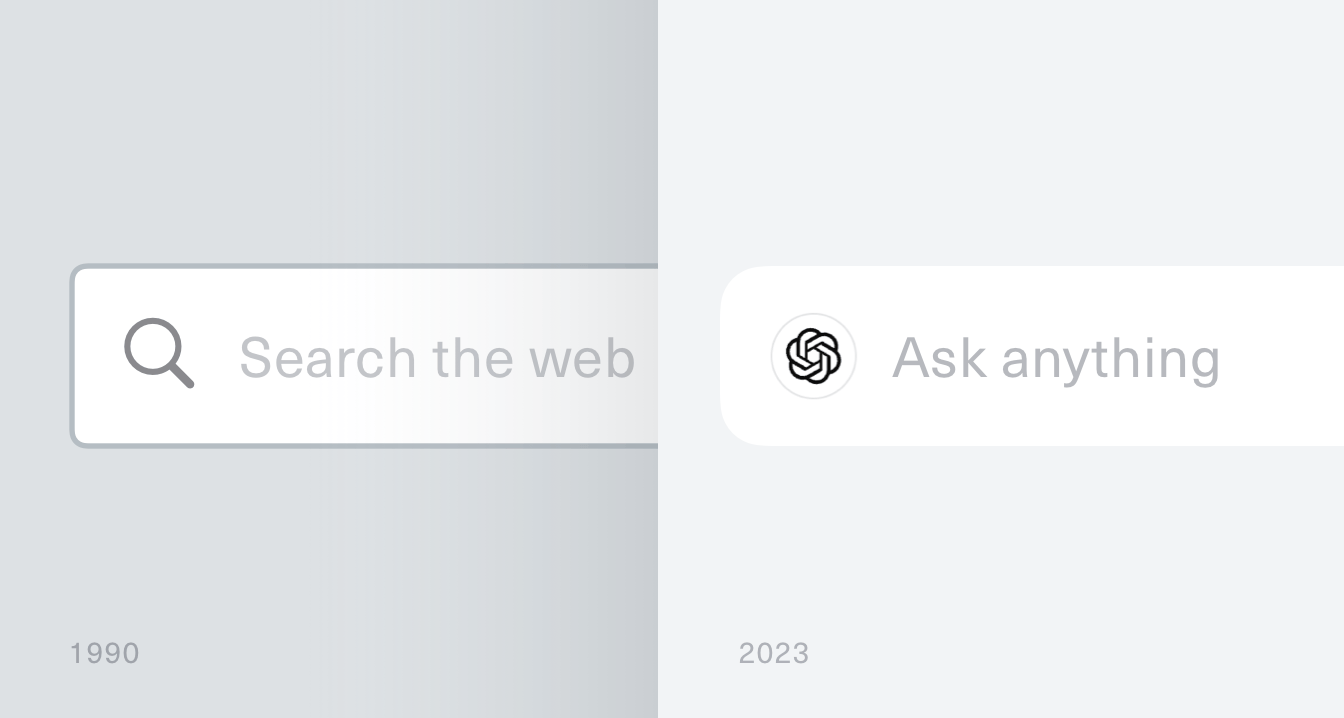Does everything AI have to be chat?

Since LLMs have become mainstream, there have been an abundance of new apps and startups built around a chat-first user experience.
It's easy to see why—there's tremendous benefit from conversational AI.
Similar to the advent of search engines with the simplicity of one search box to browse the entire web, conversational AIs like GPT allow users to ask and do many things from a single text box.

Like search engines, there's tremendous potential for conversational AI tools to let users open portals to anything they're looking for.
Some apps and startups however have interpreted this direction to mean that a chat box is now the one and only interface necessary for their product, and that there's little use in building “traditional product“ around that.
I disagree with that for a few reasons.
We keep forgetting basic UX principles
First, there's enormous value in the human interface concepts we use today. Somehow every few years we keep forgetting what decades of UX research have taught us.
From Jakob Nielsen, co-founder of Nielsen Norman Group:
“Clicking or tapping things on a screen is an intuitive and essential aspect of user interaction that should not be overlooked. Thus, [command-based interaction design] will survive, albeit in a less dominant role.“
In many cases, it's still very useful to have affordances for actions that can be taken. Sometimes a user won't know what they want or how to describe it.
It's also not efficient to have everything be a conversational input. It's always faster to tap a button than to explain what you want by keyboard or voice.

The benefit of conversational inputs lies in tasks that would be significantly more time consuming to do by hand, like realistically removing something in the background when retouching an image.
An AI chatbot also won't fix an otherwise lacking product. In some cases, AI can be highly useful, just not in the form of a chatbot. From Sarah Gibbons and Kate Moran at Nielsen Norman:
“AI chat may feel like the most obvious way to integrate AI into digital products. This is leading to an explosion of AI chatbots in products—in many cases, without providing much value. Rushing to integrate AI chat into your product will not solve all user needs.
AI does not have to be anthropomorphised, conversational, or even visible to the user to add value to an experience.“
Chatbots aren't defensible but integrated workflows are
Secondly, products will win in the long term that successfully integrate AI with existing professional workflows that are being used every day to get work done.
Most chatbot-only tools are hard to differenciate and are hardly defensible. It's no coincidence that Copy.ai, which initially became big as an AI copywriting tool, has evolved into an AI marketing automation platform.
What is very valuable are new AI-powered workflows that drive into already useful and differentiated product capabilities. A few examples:
-
Intercom has built an AI-first customer service platform with their bot Fin (powered by a fine-tuned OpenAI model). There are already hundreds of new AI support bot startups, yet none have been largely successful in the market. That's because they're missing everything else a great customer support solution still needs.
-
Adobe built amazing AI image features into Photoshop and Illustrator. There have been tons of “DALL-E and Midjourney wrapper“ startups already when this came out. But Adobe is making this commercially successful, because people still need to work with these AI generated graphics in their normal workflows.
These kinds of integrated AI workflows are more defensible because they are tremendously hard to copy—good luck rebuilding all the features in Photoshop or Intercom.
Des Traynor, co-founder of Intercom, on why product differenciation still needs to go beyond AI:
“If we take on, say, Mailchimp and we're going to use AI write the e-mails and style the notes, that's cool. But most people like Mailchimp because have they have a high deliverability rate, really good newsletter analytics, list management, subscription management, spam detection, all of that.
You'd probably have to build all that. And while you're building all of that, let's say that's 30 months of work, Mailchimp will probably work out how to build out your AI features somewhere along the way.“
Generative UI
Lastly, where natural input makes sense, a hybrid approach between natural language and bespoke UI will likely become the standard—using both text and dynamically inserting pieces of UI where it is useful.
Vercel's AI SDK 3.0 is an interesting first example of something like this in practice, where function calling is used to provide "tools" to an LLM that can render outputs as React components.